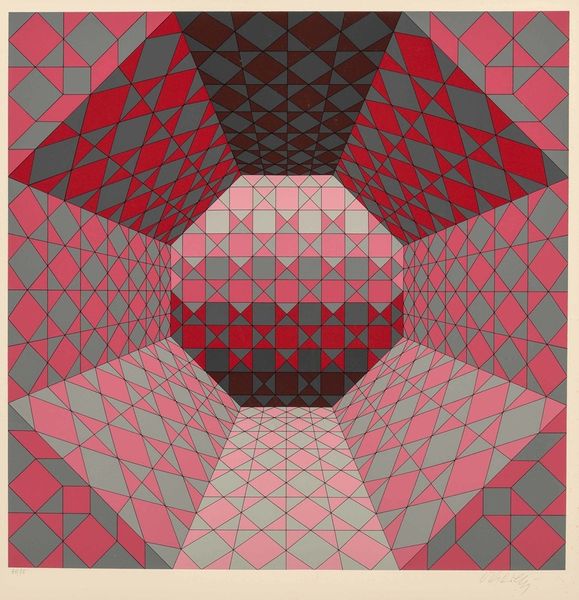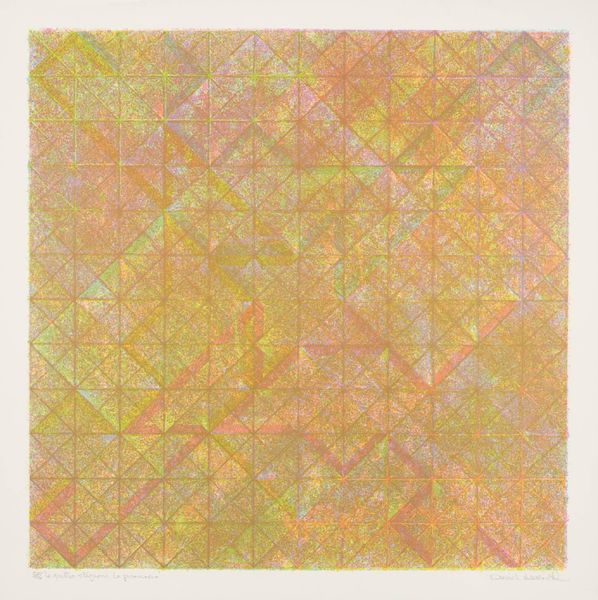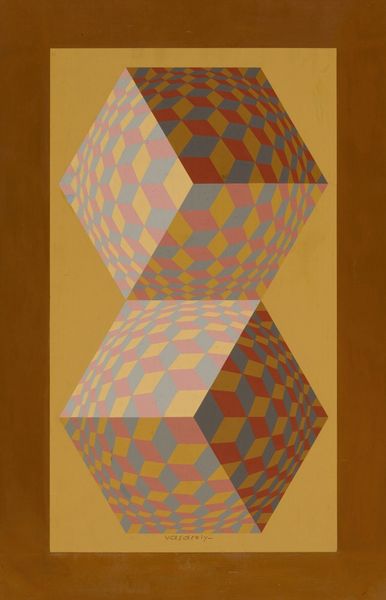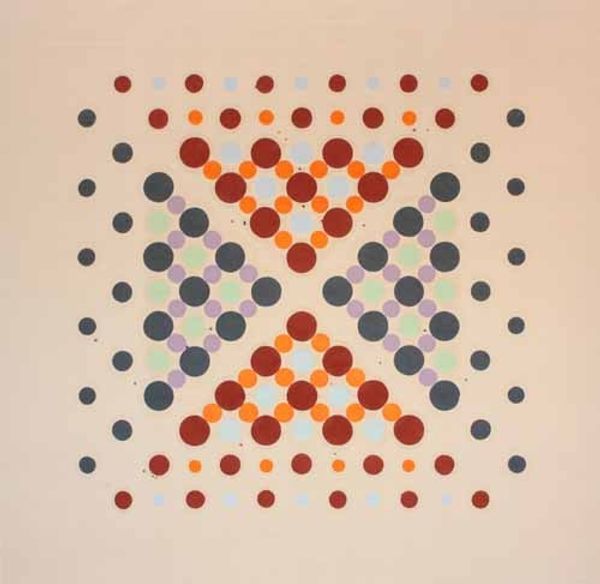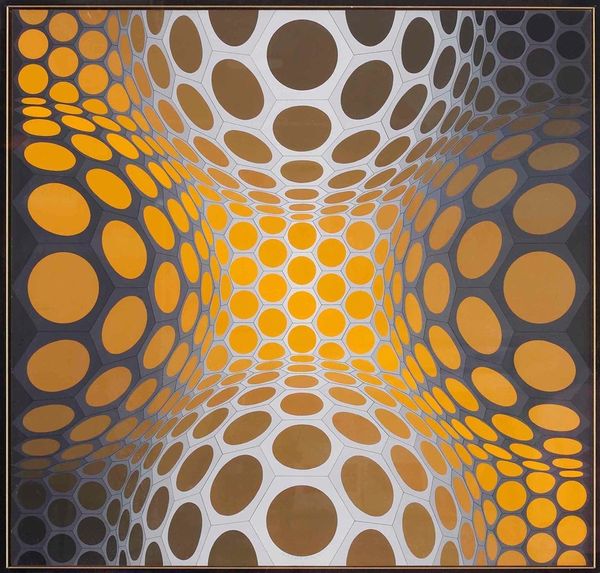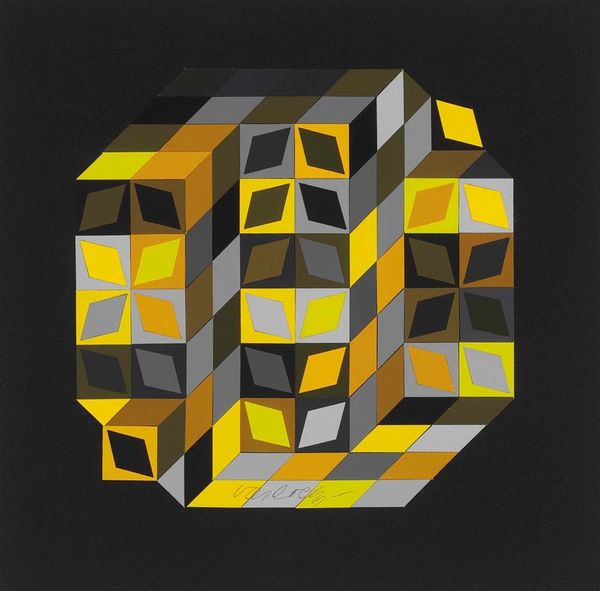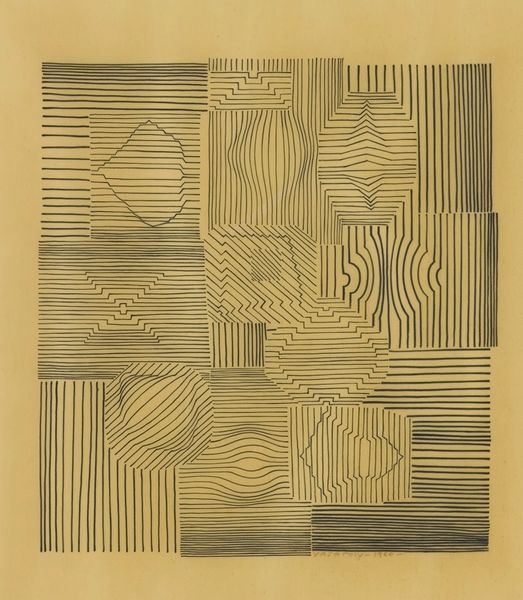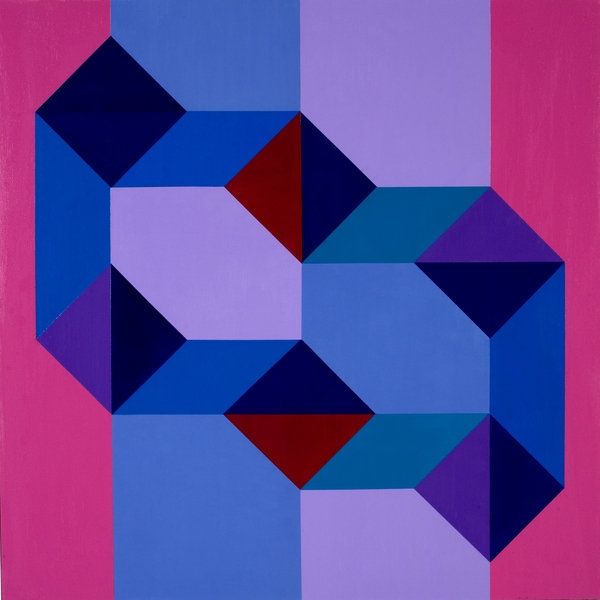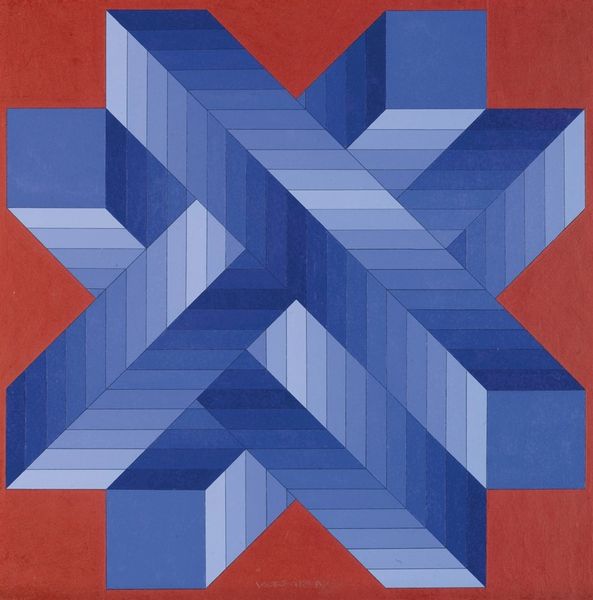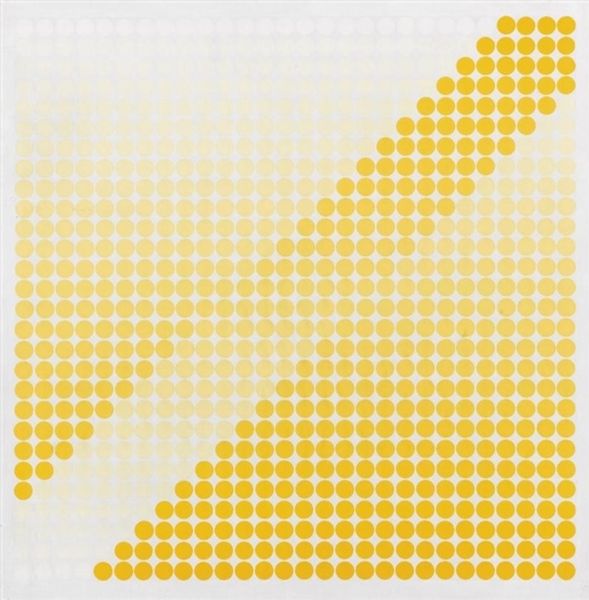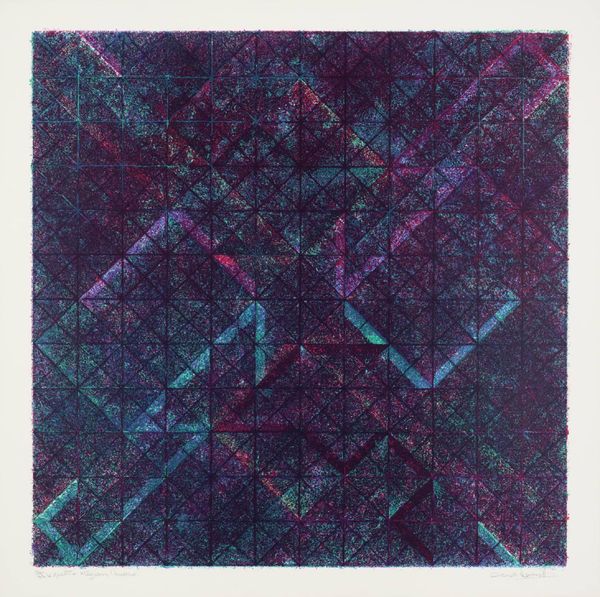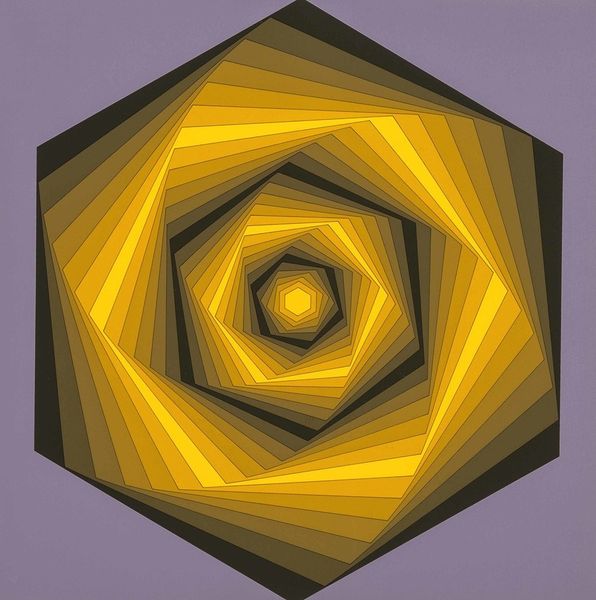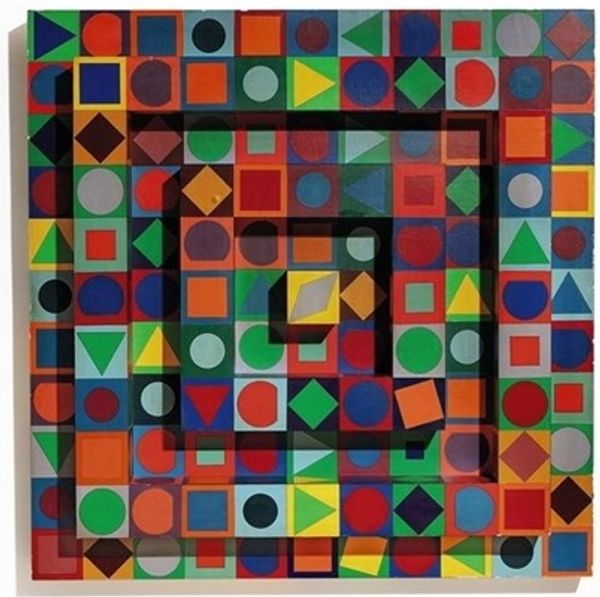
acrylic-paint
#
op-art
#
acrylic-paint
#
abstract
#
geometric pattern
#
geometric
#
geometric-abstraction
#
abstraction
#
modernism
Copyright: Modern Artists: Artvee
Editor: Here we have Victor Vasarely's "Hommage a L’Hexagone #1" from 1969, created with acrylic paint. It really jumps out at me - the geometric pattern seems to vibrate. How would you interpret this work? Curator: Visually, the artwork exemplifies Op Art's manipulation of the eye. Note how Vasarely constructs the image using solely geometric forms—specifically, multifaceted cube-like shapes. The restricted palette of yellows, grays, browns, and blacks amplifies the figure-ground relationship. Do you see how this tonal arrangement creates the illusion of depth, where certain cubes appear to project forward while others recede, activating the surface? Editor: Yes, definitely. It’s like the colors are fighting for space. Is that purposeful tension? Curator: Precisely. Formal analysis reveals the visual push and pull at play here. The use of modular units locked into a grid also reflects the principles of seriality evident in modernist art. Consider also how the hard-edged shapes eliminate any trace of gestural or subjective mark-making; Vasarely emphasizes pure form and perception. Editor: That makes sense. It feels very… calculated. Curator: The 'homage' in the title refers to France ('l'Hexagone' is a nickname for France). So the colors could refer to things associated with French history or culture. Do you notice any suggestions of what could be signified here? Editor: I see, that definitely brings the artwork into a sharper context for me. The formal approach really helped clarify the artist's intent and the techniques used to achieve this optical effect. Curator: Indeed, focusing on these formal aspects illuminates the underlying structure and logic of the work, moving beyond purely subjective readings. It’s a valuable practice!
Comments
No comments
Be the first to comment and join the conversation on the ultimate creative platform.
